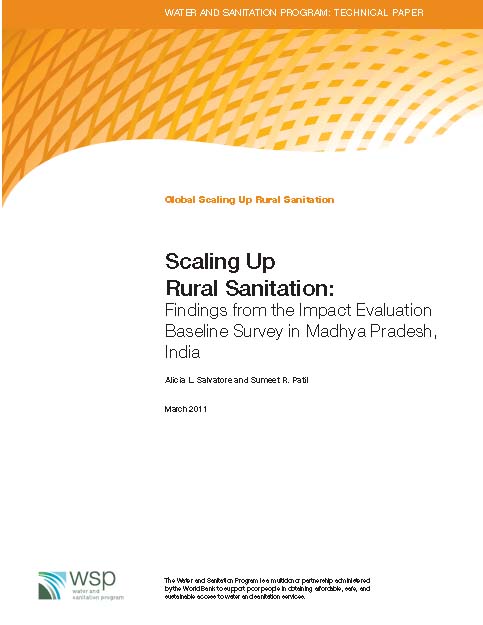 This report by the Water and Sanitation Program (WSP) of the World Bank presents the findings of the baseline and community survey conducted in two districts of Madhya Pradesh (MP) - Dhar and Khargone. The goal of the program is to reduce the risk of diarrhea and therefore increase household productivity by stimulating demand for sanitation in the lives of people. The program also seeks to stimulate the supply of appropriate sanitation program and services by conducting market research and training local artisans to build the relevant facilities.
This report by the Water and Sanitation Program (WSP) of the World Bank presents the findings of the baseline and community survey conducted in two districts of Madhya Pradesh (MP) - Dhar and Khargone. The goal of the program is to reduce the risk of diarrhea and therefore increase household productivity by stimulating demand for sanitation in the lives of people. The program also seeks to stimulate the supply of appropriate sanitation program and services by conducting market research and training local artisans to build the relevant facilities.
In India, the program is supporting the Government of India’s (GoI) Total Sanitation Campaign (TSC) in two States: Himachal Pradesh and Madhya Pradesh. The main components of the intervention include: Community-Led Total Sanitation (CLTS), Social Marketing of Sanitation, Strengthening the Enabling Environment and Nirmal Gram Puraskar (NGP) Awards.
To measure the magnitudes of the impacts, the program implemented a randomized-controlled trial impact evaluation (IE) study in order to establish causal linkages between the intervention (treatment) and the outcomes of interest. The IE used household surveys to measure the levels of key outcomes. The baseline survey, detailed in this report, includes an in-depth household survey, biometric measurements of children (anthropometric measurements, anemia testing, and stool sampling), source and household-level drinking water sampling, and community surveys.
The statistics generated from the baseline IE data indicate that there is a substantial need for improvements in sanitation and sanitation-related behaviors in Madhya Pradesh. Although the data are limited in establishing causality, emerging trends indicate that gains in improved sanitation, likely to be brought about by TSC, could have positive impacts on the health and welfare of rural families, especially young children.
The report can be downloaded from the Water and Sanitation Program website here